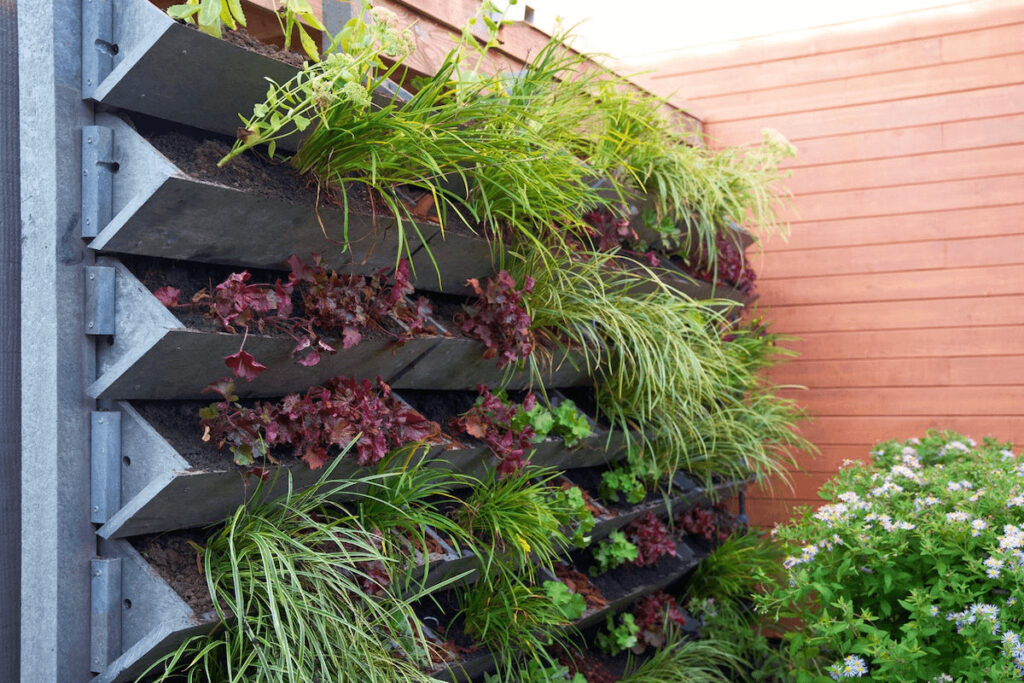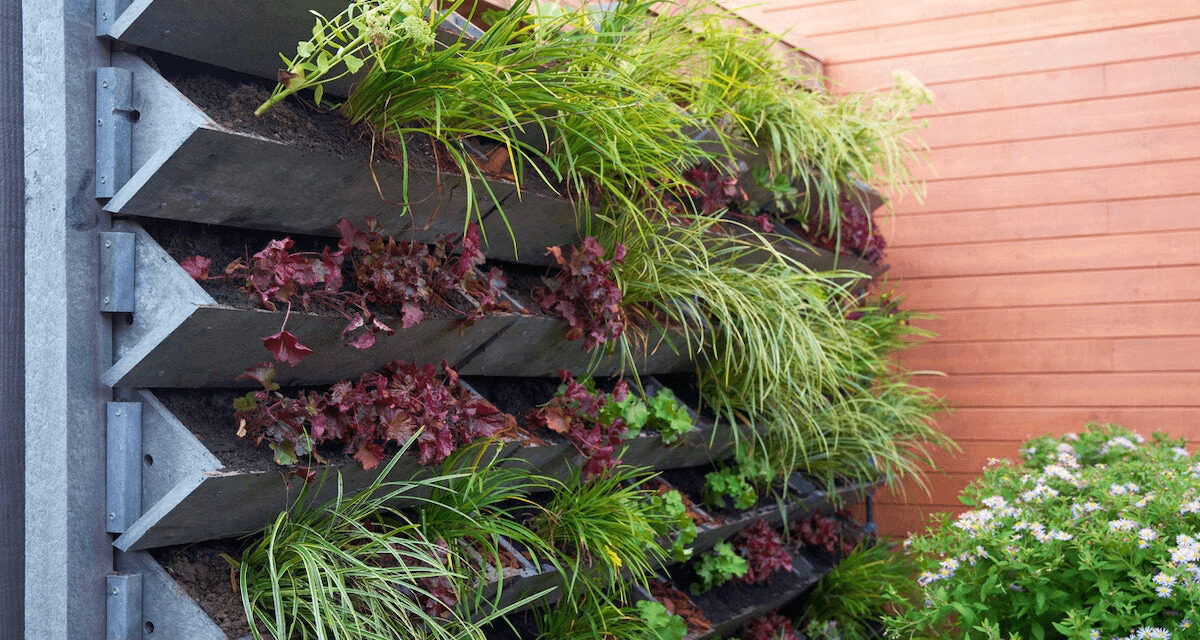As the world population continues to rise, and cities expand horizontally, finding green spaces in urban environments is becoming increasingly challenging. But where horizontal space is limited, why not look upwards? That's the basic idea behind vertical gardening—a method that uses vertical space to grow plants and create greenery. Vertical gardens have become a significant trend in urban planning and personal horticulture, turning barren walls and small urban spaces into lush gardens.

This blog post aims to explore innovative ideas behind vertical gardening and how it can transform urban spaces into green havens. We'll cover various types of vertical gardens, benefits, and practical ways you can start your vertical garden, whether you're an individual or a city planner.
The Concept of Vertical Gardening
Vertical gardening is not a new idea. Ancient civilizations like Babylon had their Hanging Gardens—one of the Seven Wonders of the Ancient World—constructed through a sort of proto-vertical gardening concept. However, the modern iteration of this ancient idea involves techniques like hydroponics and aeroponics, modular planting systems, and automatic irrigation solutions to maximize yield, aesthetics, and ease of maintenance.
Types of Vertical Gardens
Living Walls
A living wall is a partially or wholly covered wall with plants that are rooted in the structure itself or in modular containers affixed to the wall. These systems often incorporate a sub-irrigation system to ensure each plant receives adequate water and nutrients. Living walls can vary from simple DIY setups with a few potted plants to elaborate, professionally installed displays.
Green Facades
These are more straightforward compared to living walls. Vines or climbing plants, like ivy or wisteria, are anchored to a wall and allowed to grow upwards. These plants might grow directly in the ground or in containers situated at the base of the structure.
Tower Gardens
Common in hydroponic farming, tower gardens allow for multiple plants to grow in a single, vertical column. Water and nutrients are fed from the top of the tower and trickle down, providing for each plant along the way.
Modular Systems
Companies have started producing stackable, modular containers that can fit into customized wall brackets or free-standing frames. These modular systems are incredibly flexible, enabling you to add or remove containers based on your needs.
Benefits of Vertical Gardens
Space-Saving
One of the most obvious benefits is the ability to grow plants in a limited space, an ideal solution for city-dwellers who lack ample yard space.
Air Purification
Plants naturally filter the air, and a vertical garden can act as a large air purifier, removing toxins and emitting oxygen.
Aesthetic Appeal
Vertical gardens are often visually striking and can turn otherwise bland urban landscapes into works of art.
Heat Insulation
The added greenery can act as an insulator, reducing the heat in the immediate environment, which can be a boon for urban areas that experience the “heat island” effect.
Biodiversity
Vertical gardens can host a variety of plant species, attracting different types of pollinators, and increasing urban biodiversity.
How to Start Your Own Vertical Garden
Location
Choose a location with adequate sunlight or make arrangements for artificial lighting if you're gardening indoors.
Plant Selection
Choose plants based on the location, climate, and ease of care. Herbs like basil and mint, vegetables like lettuce and spinach, and flowering plants like petunias are good options to start with.
Structure and System
Decide on the type of vertical garden that best suits your space and resources—living walls, green facades, tower gardens, or modular systems.
Watering and Nutrients
Plan for an efficient watering system. Drip irrigation or automated systems are often recommended.
Maintenance
Routine pruning, watering, and inspection for pests are essential to keep your vertical garden healthy.
Expanded Benefits of Vertical Gardens
Mental Health Advantages
Amidst the hustle and bustle of city life, the presence of greenery can have a calming effect on the mind. Several studies have indicated that natural elements in urban environments can reduce stress, increase feelings of happiness, and even improve cognitive function. Vertical gardens, accessible and visible to many, can serve as collective touchpoints for mental wellness.
Noise Reduction
Another lesser-known advantage of vertical gardens is their ability to absorb noise, making them excellent natural sound barriers. For buildings close to busy roads or industrial areas, a vertical garden can provide both aesthetic and acoustic benefits.
Economic Impact
From a commercial standpoint, vertical gardens can increase property value. Retail spaces and apartments with vertical gardens can command higher prices due to the added aesthetic and environmental benefits.
Educational Opportunities
Vertical gardens can serve as educational tools for communities, particularly for children. They can be used to teach basic biology, the importance of sustainable practices, and the value of biodiversity.
Advanced Techniques in Vertical Gardening
Internet of Things (IoT) Integration
Advanced vertical gardens are now incorporating IoT technology for efficient watering, lighting, and nutrient supply systems. Sensors can detect soil moisture levels, ambient light, and even plant health, then automatically adjust settings or notify you for maintenance.
Aquaponic Systems
Some vertical gardens are combined with fish tanks in an aquaponic system. Fish waste provides an organic nutrient solution for the plants, and the plants help filter and clean the water, which is then recirculated back to the fish tanks.
Rotating Towers
Innovative designs like rotating towers allow plants to receive consistent light and air exposure. These systems can be powered by solar panels for an even more eco-friendly setup.
Community Impact of Vertical Gardens
Public Installations
Cities like Singapore and Milan are incorporating vertical gardens into their urban planning on a large scale. These installations are not just pretty to look at; they're part of a larger initiative for sustainable urban living.
Social Cohesion
Community-managed vertical gardens in public spaces can serve as a focal point for social interaction. They can act as platforms for educational workshops, bringing neighborhoods together and instilling a sense of community pride.
Urban Farming
Vertical gardens can have significant implications for local food production. In areas where land is scarce, vertical farming can produce crops year-round in a controlled environment, reducing the need for transport and thereby lowering the carbon footprint.
Scaling Your Vertical Garden
Professional Consultation
If you’re serious about setting up a large-scale vertical garden, it may be beneficial to consult professionals in landscape architecture, horticulture, and even engineering to ensure that your vision can be realized both aesthetically and structurally.
Grants and Funding
Some local governments offer grants or tax incentives for green building initiatives, including vertical gardens. This financial support can help offset initial setup costs and promote the adoption of these systems.
Collaboration
Collaborate with schools, community centers, and local businesses to create community gardens. It's an excellent way to pool resources and share responsibilities.
Conclusion: The Future of Vertical Gardening
As the technology behind vertical gardens becomes more sophisticated, and as the world grapples with the challenges of urbanization and climate change, these green installations will likely become even more integral to our cities and lives. They represent a harmonious blend of aesthetics, sustainability, and community—elements that will shape the future of urban living. Whether you’re an individual looking to enhance your living space or a policy-maker aiming to make a broader impact, vertical gardening offers a fertile ground for innovation and growth.
The sky’s the limit when it comes to vertical gardening. From transforming dull walls into vibrant green canvases to growing your veggies in the comfort of your apartment, vertical gardening offers an array of possibilities. It’s not just a gardening method but an urban revolution, proving that nature can flourish in the concrete jungle. As we continue to innovate, the vertical gardens of today will likely serve as the foundation for the green urban landscapes of tomorrow.



















